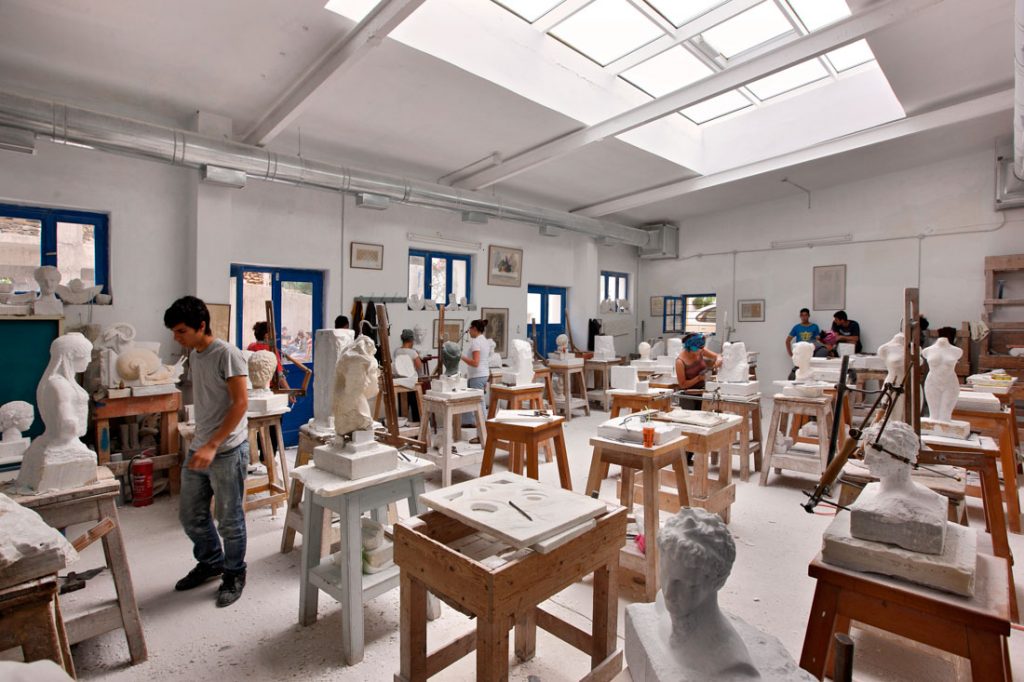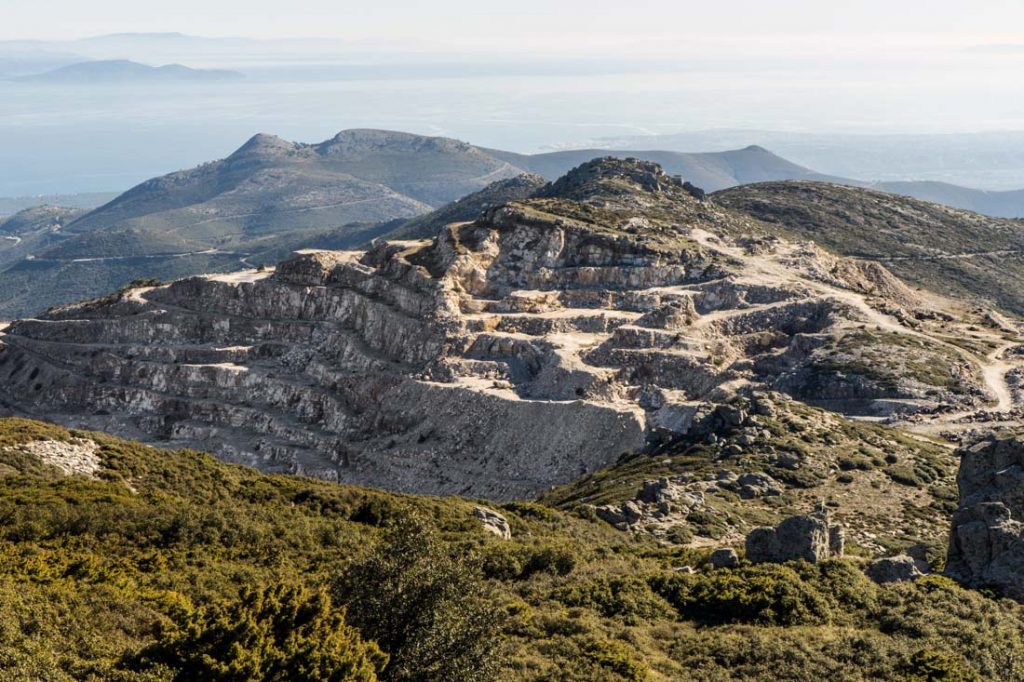Anyone who has been to Greece knows the beauty of the landscape and of the seas. Beneath the surface, the country is equally rich in beauty, the source of beautiful marbles as well as minerals that have contributed to the wealth and culture of the country.
The Marble Quarries of Ancient Greece – Paros, Thassos, Naxos, Tinos, Penteli
Many areas in Greece in ancient times were renowned for the excellence of their marble. The famous marbles of Greece live on in treasures of the world’s cultural heritage.
Each marble has its own specific personality and qualities. Sculptors and architects select them for their unique properties. Of the finest marbles of Ancient Greece, three famous queries were in the Cyclades, themselves an eternal symbol of stark and elemental beauty.
Paros
Parian marble was the most desirable of materials for sculpture in the ancient world. It has an unusual quality – with its clarity and translucence, Parian marble captures the light. This gives it an unusually delicate quality, making it ideal for representing the human figure, the light giving the sense of the presence of life.

An astonishing majority of ancient sculptures of Greece have been carved from the marble of Paros – some estimate well over half (70%). It was the favored material of the most famous of the sculptors of the ancient world: Raxitelus and Polykleitos among them. One of the best known works of Praxitelous – his sculpture of Hermes and the infant Dionysus – is of Parian marble. Other famous sculptures of Parian marble include the Venus de Milo (the Aphroditi of Milos), the Niki of Samothraki, and the Peplos Kore.
But this famous marble was not only used in ancient Greece; such a revered material, it was also used much later; it was even used for the tomb of Napoleon Bonaparte.
Thassos
Since the Parians certainly knew their marble. When they arrived on the northern Greek island of Thassos in the 7th century BC, they could tell that the marble of the northern Greek island of Thassos also had extraordinary marble, so they set up quarries, which can still be seen today. They are directly at the water, a dramatic sight. The marble of Thassos was used of course on the island extensively. Today, Thassos remains a source of the highest quality marble, known for its reflective qualities.
Naxos

Large-crystalled with a definite grain and some color variations – from an almost blue-tinged white to white with grains of black or gray, Naxian marble has variety and distinction. The original marble quarry of Naxos in antiquity was at Apollonas. From here, the marble for the most iconic sight of Naxos – the “Portara” – was quarried. Larger than life Kouri – male figures – were often made of Naxian marble. Famous treasures of Naxian marble include the Naxian Sphinx, which overlooked the Sanctuary of Apollo at Delphi from a column 12 meters high. Structures of marble from Naxos include the archaic (6th century BC) Temple of Sangri on Naxos – one of the earliest examples of an Ionic temple, and the 6th century BC Temple of Dionysos, also on Naxos, and subsequently converted into a Christian church.
Tinos
The elegant Tinian marble is often traced with green veins, and this marble-rich island has quarries at various locations throughout the island, the Koumela quarry among them.

Tinos is the most famous island for marble craftsmanship in Greece, recognized with UNESCO intangible cultural heritage status. There is a Museum of Marble Crafts in Pyrgos, Panormos. Tinos island has a long history of carving from the ancient world up to the present, with workshops in operation today. Famous sculptors from Tinos include Gioannoulis Chalepas, descended from a family of marble sculptors, and a famous sculptor of the modern era. He is sometimes referred to as “The Greek Rodin.”
Pentelli
Even if the name itself is not known to all, Pentelic Marble is surely the most famous in the world. Ictinus and Callicrates chose this superb marble from the neighboring Mt. Pentelli to construct the Parthenon. The marble is pure white with a slight yellow cast to it, giving it a golden shimmer under the bright Attic sun.

In fact, much of Athens of the Golden Age (5th century) is built with Pentelic marble. In the classical era, there were 25 quarries on the south slope.
Today, there is a quarry on the north slope, from which the marble called “Dionysos” is extracted and used today.
Marble Quarries in Greece
On Paros, there is an archaeological park of the ancient marble quarries that can be visited, while on Naxos, one can see both ancient and still active marble quarries. In Tinos, quarries are found in various places throughout the island. While on Tinos, one can admire the excellent craftsmanship, beginning at the informative Tinos Marble Museum, or even participate in a workshop of marble working.
In addition to being the source of so much beauty in the ancient world, the marble quarries of Greece are themselves dramatic sites. Have you visited a marble quarry in Greece?





